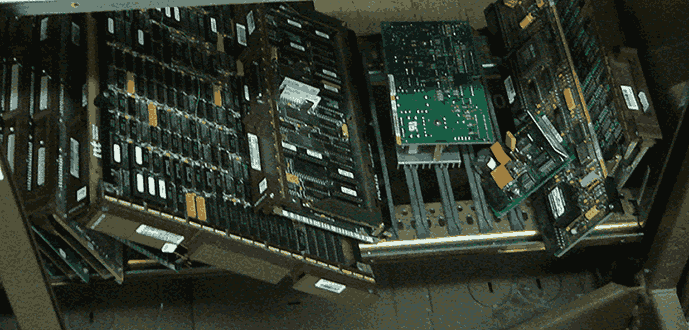Inventory Management 201: 10 Benefits to Spare Recovery
 Among the many benefits of conducting thorough asset inventories regularly is the potential for spare asset recovery. Spare recovery is the "process of maximizing the value of unused or end-of-life assets through effective reuse or divestment."[1] What could be found during a field asset inventory, however, can take on a number of forms, from obsolete equipment to broken assets in need of repair or disposal, but perhaps the most prevalent type of asset for recovery is the spare.
Among the many benefits of conducting thorough asset inventories regularly is the potential for spare asset recovery. Spare recovery is the "process of maximizing the value of unused or end-of-life assets through effective reuse or divestment."[1] What could be found during a field asset inventory, however, can take on a number of forms, from obsolete equipment to broken assets in need of repair or disposal, but perhaps the most prevalent type of asset for recovery is the spare.
Spare assets are much as they sound--items found during inventory that are not currently in use. While an inventory can identify spare equipment, such as plug-ins, what a company chooses to do with them can be a tough decision. For this reason, we have compiled a cheat sheet for spare recovery--ten benefits to finding, cataloging and valuing your excess equipment.
1. Recovering spare equipment creates cost savings.
Finding and cataloging spare equipment allows redistribution and redeployment of valuable assets where they are needed most. This saves your organization from purchasing new assets when idle stock could be used. Assets found equals money saved.
2. Recovering spare equipment increases revenue.
When spare assets are identified, especially if they are out of date or truly excess and unneeded elsewhere within the organization, they can be sold for profit. Read more from the Alden Updater to learn how spare equipment can generate revenue.
3. Having fewer spare assets on hand helps companies better prepare for the future.
Technology moves fast, often so fast that all equipment in inventory cannot be used up before it becomes obsolete. Recovering spare assets enables a more efficient and less cumbersome transition to what is "next" by eliminating excess stock on hand.
4. Having the right amount of spare assets keeps business moving.
Companies should calculate optimal safety or min/max levels--just the "right" amount of inventory of critical assets. These business-specific levels should be based on equipment in service and will allow you to maintain an optimal amount for operations, meaning not too much and not too little.
5. Assessing the functionality of spares can prevent headaches.
Just because a company has a spare asset does not mean that item will work as required when put into service. An inventory that includes spare recovery uncovers defective spare assets that can be retired for tax purposes and removed from service. This ensures the stock on hand serves its intended purpose when you need it.
6. Recovered spares can be made useful.
When an excess piece of equipment is discovered, your organization gains a little bit of possibility. Recovered spares can be tested to determine immediate functional status and then placed in service or sent for repair. This scenario is is certainly preferable to locating a needed spare asset and then immediately finding out it is defective.
7. Recovered spare assets enhance field effectiveness.
In the field, any return to the warehouse for another part means hours on the clock and excess money expended in resource allocation and shipping. Further, when the equipment finally arrives, it must work as intended. When spares are effectively recovered, each asset still in inventory will have been deemed functional, repaired or replaced, enhancing the overall reliability of spare stock everywhere, and perhaps most importantly, in the field where maintaining constant reliable service to your customers is on the line.
8. Recovering makes cycle counting more efficient and effective for the local Central Office.
Many COs use cycle counting--the process of counting a small number of assets each day with the intent of cycling through the entire inventory over and over--in the hopes of creating a more accurate inventory process. Recovering unused items reduces the total number of items to be counted each cycle. Smaller counts done repeatedly increases inventory record accuracy, and a highly accurate inventory record means the CO may scale back on audit procedures, reducing audit time and associated labor costs.
9. Recovering spares saves time.
A warehouse full of equipment without organization is a lot like a black hole: it sucks up time, money and motivation. Using an asset inventory to update your on-site spares by location is key to creating faster, easier acquisition of assets by the people who need them most.
10. Spare management creates the opportunity to organize spare hubs.
When spares are identified, placing them in a hub or central location for storage allows the asset owner to consolidate storage, saving space, money and time retrieving critical assets.
Bonus: In addition to the above-mentioned physical benefits to good spare management, having a robust inventory management system in place can further enhance efficiency by making the tracking and location of critical spare assets easy in warehouses, central offices, remote terminals, garages and trucks.
Also be sure to read: Inventory Management 101: Improving Data Collection and Asset Recovery Processes

Comments